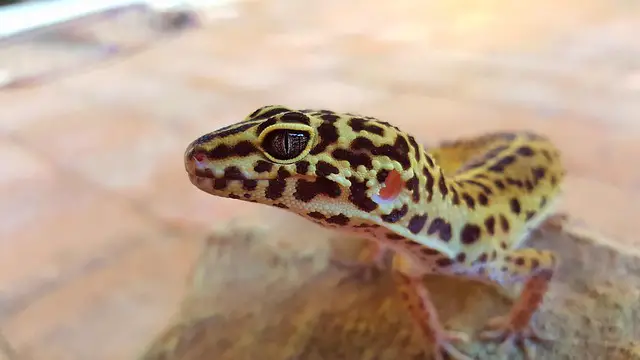The leopard gecko is a lizard species native to parts of Asia and Pakistan. In the wild, these lizards can be found in various habitats, including deserts, rocky regions, and even forests. Leopard geckos are a popular pet among reptile enthusiasts due to their docile nature and ability to be easily cared for in captivity.
Leopard Gecko Habitat Requirements
In the wild, leopard geckos are typically found in arid environments. Their natural habitat includes a lot of sand, rocks, and other barren substrates. Leopard geckos often seek out hiding places such as small crevices or caves.
Trying to recreate this type of habitat as closely as possible in captivity is essential. A suitable leopard gecko enclosure should include:
- A layer of sand or another loose substrate for the lizard to bury itself in
- An array of hiding spots for the lizard to feel safe and secure
- A basking spot with a heat lamp to provide the lizard with some warmth
- Leopard geckos are not particularly active lizards, so they do not require a large enclosure. A 10-gallon tank is typically sufficient for one adult leopard gecko.
However, if you are planning on keeping more than one gecko in the same enclosure, you will need to increase the size of the enclosure accordingly. For every additional gecko, you will need to add an extra 5 gallons of space.
Dietary Considerations
In the wild, leopard geckos are opportunistic feeders, meaning they will eat whatever food source is available.
This includes insects such as crickets, mealworms, and wax worms. In captivity, it is best to feed your leopard gecko a diet that consists primarily of live insects.
These insects should be dusted with a calcium supplement before feeding to ensure that your lizard gets the nutrients it needs. Juvenile leopard geckos should be fed twice a day, while adults can be fed once a day.
Conclusion
If you are considering getting a leopard gecko as a pet, it is essential to research what their natural habitat looks like and what their dietary needs are. By recreating their natural habitat as closely as possible and providing them with a diet that consists primarily of live insects, you can help your leopard gecko thrive in captivity.




